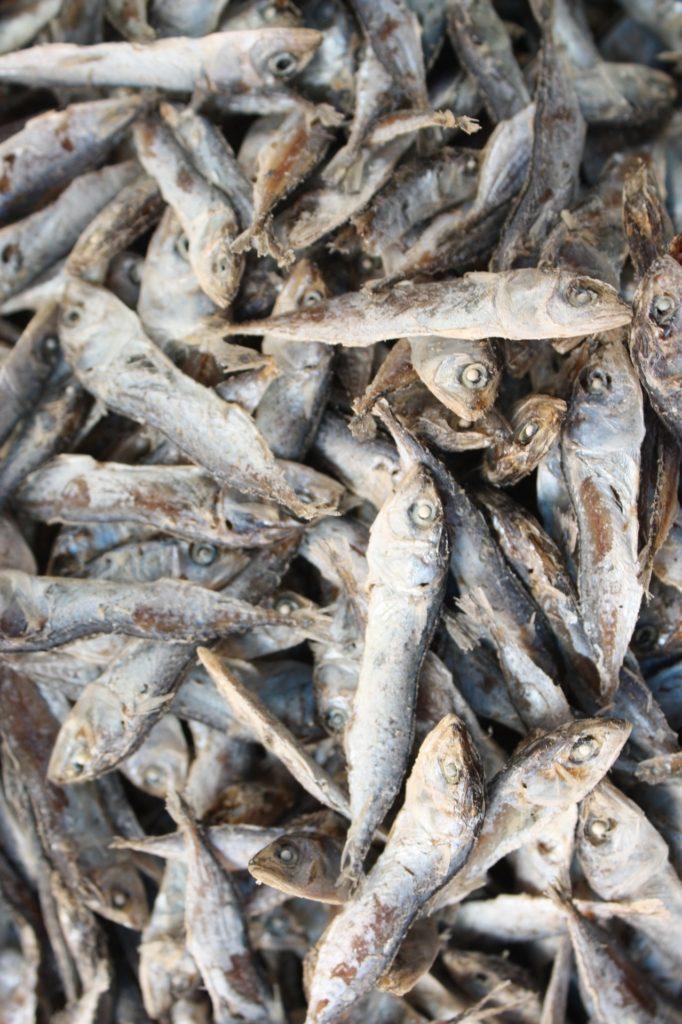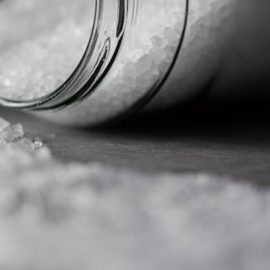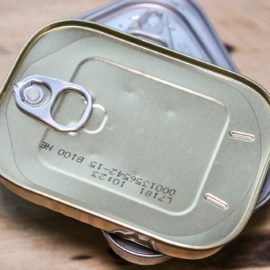
Salting is one of the oldest forms of food preservation. Before the invention of the refrigerator, the majority of households used salt to extend the shelf life of various foods. Today, salting is one of the most prevalent pretreatments for fish products. It reduces the moisture content of fresh fish and acts as a preservative, converting it into shelf-stable items.
Salting does this by preventing the growth of spoilage bacteria and molds while allowing friendly bacteria and local enzymes to populate and break down the relatively flavorless protein molecules and lipids found in fish. This, in turn, reacts to produce even more complex flavors.
Since ancient times, people have been aware of the impact of a food’s water content on its perishability. Between 15,000 and 10,000 BC, our forefathers began to dry foods to preserve them. They used the wind and sun to dry excess fish and meat, and later did the same with excess fruits. The combination of drying and salting contributes to the development of distinctive sensory characteristics of products, which impact their use as food.
Fish that has been salted for a day (with a little salt) often stays fresh for a few days, while fish that has been steeped in salt last for about a year or more. Lean cod and other fish from related families have always been salted before being air dried. In contrast, fish like herrings and their relatives are preserved from rancidity caused by the air through brining and/or smoking.
Let’s discuss further.
WATER ACTIVITY IN FRESH FISH
In food science, the term water activity is a commonly discussed term. It refers to the amount of free or unbound water, water that can be used for various processes, particularly to support microbial growth. Most foods contain a water activity of around 0.95. The water activity of most fresh fish is over 0.85. This is enough for microorganisms to thrive and spoil food. This is why they are highly perishable.
To prevent this, the water activity must be lowered down. Pathogenic bacteria are inhibited by a water activity of 0.85 or lower. While certain yeasts and molds can survive in a 0.75 water activity environment, they can no longer create toxins. In fish salting, the water activity decreases because salt draws the water out in a process called osmosis. The idea is to increase the concentration of salt, a solute. In this manner, water diffuses between cells in the environment. This results in the same concentration of salt on both sides of the cell. According to the Food and Agriculture Organization of the United Nations (FAO), a concentration of between 6 to 10 % salt will prevent the growth of most spoilage bacteria.
You might also like: Water Activity (aw) And Food Safety
The procedure results in a saline equilibrium between the muscle and the surrounding salt solutions. Under typical temperature conditions, the maximum concentration obtainable is that of a saturated brine solution. Because of the osmotic pressure between the brine and the fish muscle, sodium chloride or salt diffuses through the fish flesh via a dialysis mechanism, and water diffuses to the outside.
This process does not go on indefinitely. The sodium and chlorine ions create a water-binding complex with protein. This in turn produces an osmotic pressure that attains an equilibrium.
MICROBIAL SPOILAGE OF FISH
Most microorganisms responsible for the spoilage of fish halophobic. Halophiles are microorganisms that can thrive in an environment of high salinity— with a high concentration of salt. And they will not grow until there is 10% salt present. Examples of halophiles include Halobacterium salinaria, H. cutirubum, Pseudomonas spp Sarcina morrhuae and S. litoralis.
These bacteria are aerobic—they require oxygen for growth, and are rarely found in pickled fish, where the brine provides only limited oxygen access. They are also thermophilic, with an optimum growth temperature of approximately 42°C and a minimum growth temperature of approximately 5°C.
These bacteria produce pink spoilage. Pink spoilage are so-called because of the color of their colonies and the resulting appearance of the cured fish. A delicate pink sheen on the surface of the fish in wet stack or during pining is the first indicator of pink spoilage. This can be readily removed without harming the fish.
Maintaining the ambient temperature below 50°F (10°C) is likely to prevent initial germination and growth of halophiles. Treatment with formaldehyde or sulphur dioxide vapors, or dipping the fish in a solution of sodium metabisulphite also work. Although food poisoning cases that were allegedly brought on by eating pink-spoiled fish were likely actually brought on by the spread of Staphylococcus aureus, a bacteria that produces exotoxins.
This bacteria start growing at somewhat greater water activity levels than those required for the growth of pink bacteria. Salt fish has the water activity of a saturated common salt solution of 0.75, regardless of how much it has been dried before and after salting.
Many microorganisms will rupture in very high salt solutions due to the difference in pressure between the exterior and inside of the microorganism
METHODS OF MAKING SALTED FISH
Depending on the fish composition and size, salting may be dry or wet.
The rate of salt diffusion is proportional to the concentration gradient between the salting medium at the surface and the point in the fish most distant from the salting medium. Hence, the stronger the brine, the faster the salt uptake and to achieve a water activity low enough for preservation.
Fish are salted whole and uneviscerated, eviscerated and split open, or in smaller pieces ranging from fillets to mince, depending on their size. Only small species, such as anchovies and small herring, can be salted whole without gutting. Large fish usually have fish skins that prevents proper salt penetration. Hence, large fish treated in this manner would decay before the salt could have an effect.
You might also like: Things You Need To Know About Smoking Fish
The most frequent approach is a mix of the dry and wet method. The fish are immersed in dry salt before being immersed in the liquid pickle produced by the salt solution in the liquid extracted from the fish. This is also known as ‘blood pickle’.
The dry method involves stacking the fish in salt by directly applying it onto the surface.
And the brine produced is allowed to run away. Anchovies are commonly dry-cured by layering it with sufficient salt to saturate the tissue of the fish.
This is then placed under weight and stored at high temperatures around 86°F (30°C) for 6 to 10 months. This is a very traditional Mediterranean dish that can be eaten as is or combined with oil or butter to make a paste. Muscle, skin, blood cells, and enzymes, along with bacteria and the warm curing temperature, all work together to stimulate the early stages of browning reactions and generate several aromatic molecules.
You might also like: 5 Reasons That Make Fish Highly Perishable
Cod can also be dry-cured in 25% salt marinade for at least 15 days. The fish can be stored after for several months as Micrococcus bacteria break down molecules, generating trimethylamine (TMA) and flavor-generating free amino acids. Furthermore, oxygen works on the fat molecules, forming fatty acids that contribute to the aroma of the fish as well. A further 3 days of artificial drying in a controlled cold chamber completes the process.
The wet method involves immersing the fish in a strong brine, or ‘pickle’.
Wet salting is accomplished through brining and pickle curing. The method employed is determined on whether the product will be further processed by drying or smoking, or just preserved by salting. The wet method is ideal for fatty fish such as mackerel and sardine.
Because herrings and comparable species can contain up to 20% fat by weight, traditional dry curing causes rancidity. During the early days of making salted fish, air would be removed from the equation. And the fish would be wet-cured in a mild brine (16%-20% salt solution), allowing the fish to be stored for up to a year.
Then, a method was devised that allowed a portion of the intestine rich in digesting enzymes (the pyloric caecum) to remain inside the fish. In addition to the fish muscle and skin enzymes, the digestive enzymes of the pyloric caecum collaborate to break down proteins. The result is a softer texture and a complex flavor-aroma that was slightly cheesy, fishy, and meaty. This technique is still followed today, and the herrings are eaten as they are, without being salted or cooked.
References:
G.M. Hall (1997). Fish Processing Technology (2nd edition). Blackie Academic and Professional.
M. Gibson (2018). Food Science and the Culinary Arts. Academic Press.
M. Shafiur Rahman (2007). Handbook of Food Preservation (2nd edition). CRC Press.


